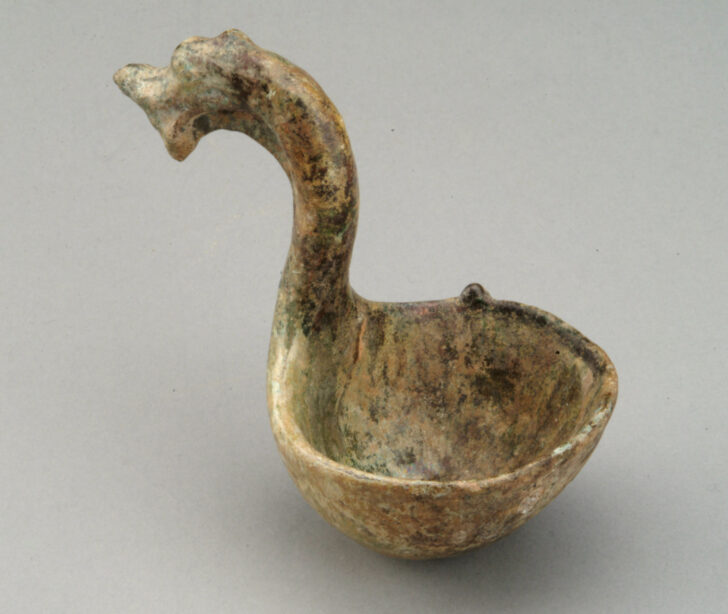Ladle
Chinese

Description
Subject Matter:
By the Western Han dynasty, basic household bowls, plates, basins, jars, etc. were produced in great quantity, not only for use in daily life, but also specifically for tombs as mingqi (明器) (literally "bright objects"), or grave goods, as a way to provide for the deceased. These mingqi included everything one would need during the afterlife. Naturally, these objects reflected daily life during the Han. Mingqi could include houses, towers, gates, granaries, livestock pens, chicken coops, wells, cooking stoves, storage vessels, dishes, incense burners, lamps and figures such as horses, dogs, anthropomorphic animals, and people such as officials, guardians, servants and entertainers, and more. The number of ceramic mingqi items in a tomb could reach numbers of a few to several hundred objects.
Bowls, ladels and spoons in this shape, having a dragon handle, were a Han Dynasty innovation. Han dynasty ceramic pictorial bricks depict men and women eating and drinking from dragon handled bowls.
Physical Description:
A red, round bottom, ovoid earthenware ladle with a long curved dragon headed handle. It is covered in a green lead glaze with iridescence and calcification.
Usage Rights:
If you are interested in using an image for a publication, please visit https://umma.umich.edu/request-image/ for more information and to fill out the online Image Rights and Reproductions Request Form.